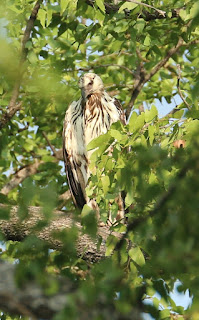 |
| Zebu trampling a rice paddy |
The second half of our stay in Madagascar was in the north. Returning up towards Tana we stopped at a local zebu market, Farmers with up to a dozen of the local zebu cattle stand around in a open area while prospective buyers walk between them examining the cattle, then haggling over the price. Fascinating to see, with many of the animals bred in the south destined for a 2 day drive up to Tana for the markets there. The Zebu, apart from being bred for meat are used on the farm for pulling wagons,
 |
| Zebu Market |
ploughing the fields, and just trampling the ploughed fields before the rice is planted.
Antsirabe, one of the towns on the main road sits in the highlands, even getting an occasional frost in the winter. A short drive from the town up a very slippery track we found Tritriva crater lake. A vertically sided lake in an old volcano crater surrounded by forest and very fertile farmland growing all sorts of fruit and vegetables. Antsirabe itself is an old colonial town with a wide central avenue - very French, with a very relaxed atmosphere.
 |
| Giraffe beetle |
Andasibe National Park, east of Tana, is home to the largest, and noisiest lemur (the Indri), as well as one of the prettiest sifaka (the diamante).
 |
| Parsons Chameleon |
Our guide for both the evening walk and the day trek into the park was fantastic, finding some very special chameleon as well as the Indri and diamante sifaka. Being the wet season, we were lucky with the weather, having a dry evening and morning walk, with heavy rain in the afternoon.
 |
| Indri Lemur |
The east coast of Madagascar is exposed to the Indian Ocean, so the French constructed inland canals joining the freshwater lakes to provide a sheltered 600km route for boats. On the edge of one of the lakes is a small resort surrounded by forest which has numerous habituated lemur. We were woken each morning by black and white lemur jumping across the forest in front of our cottage.
 |
| Diamante Sifaka |
An island nearby has been created as a sanctuary for the strange Ari ari nocturnal lemur which has one extraordinarily long finger for prising insects out of their burrows, or crevices in trees. Locals fear the ari ari as they believe it brings bad luck, so they kill them, this island rescues them and tourist visits help pay for permanent security.
 |
| Ari Ari |
 |
| Flooding in Diego Suarez |
Our last week was spent in Diego Suarez at the very north of the island, enabling us to visit some of the most beautiful beaches, as well as visiting two areas of tsingy - pointed rock formations formed by erosion of the limestone, or surrounding rock, as well as a couple of national parks, each of which contains species found nowhere else. The town itself has many retired ex-pats, but the surrounding, hilly countryside was some of the poorest we had seen in Madagascar. Villages relying on subsistence rice farming, with no electricity or mechanical devices, where they shelter in wooden huts from the monsoon type rain. One 30 minute downpour resulted in water outside our hotel 500mm deep in which children were playing.
  |
| Diego Suarez |
 |
| Local Village |
Flying back to Tana before our return to South Africa we had good views of the inland areas of the island, scattered villages in long valleys with only a mud road, resulting in them being cut off from vehicle access through the wet season.
Back in Tana, the rice harvest and planting was in full swing. It is amazing how they have maintained rice paddies right near the centre of the city, but does provide a lot of open space. The harvesting was taking place from paddies under 500mm of water as they have had so much rain.
  |
| Tsingy |
 |
| Main road to Tana from Diego Suarez |
 |
| Crossleys Dwarf Lemur |
 |
| Black and White Ruffed Lemur |
 |
| Eastern Brown Lemur |
 |
| Crowned Lemur |
 |
| Highland Houses |
 |
| Rive Harvest in Tana |
 |
| Rock Thrush found only on Amber Mountain |





















































